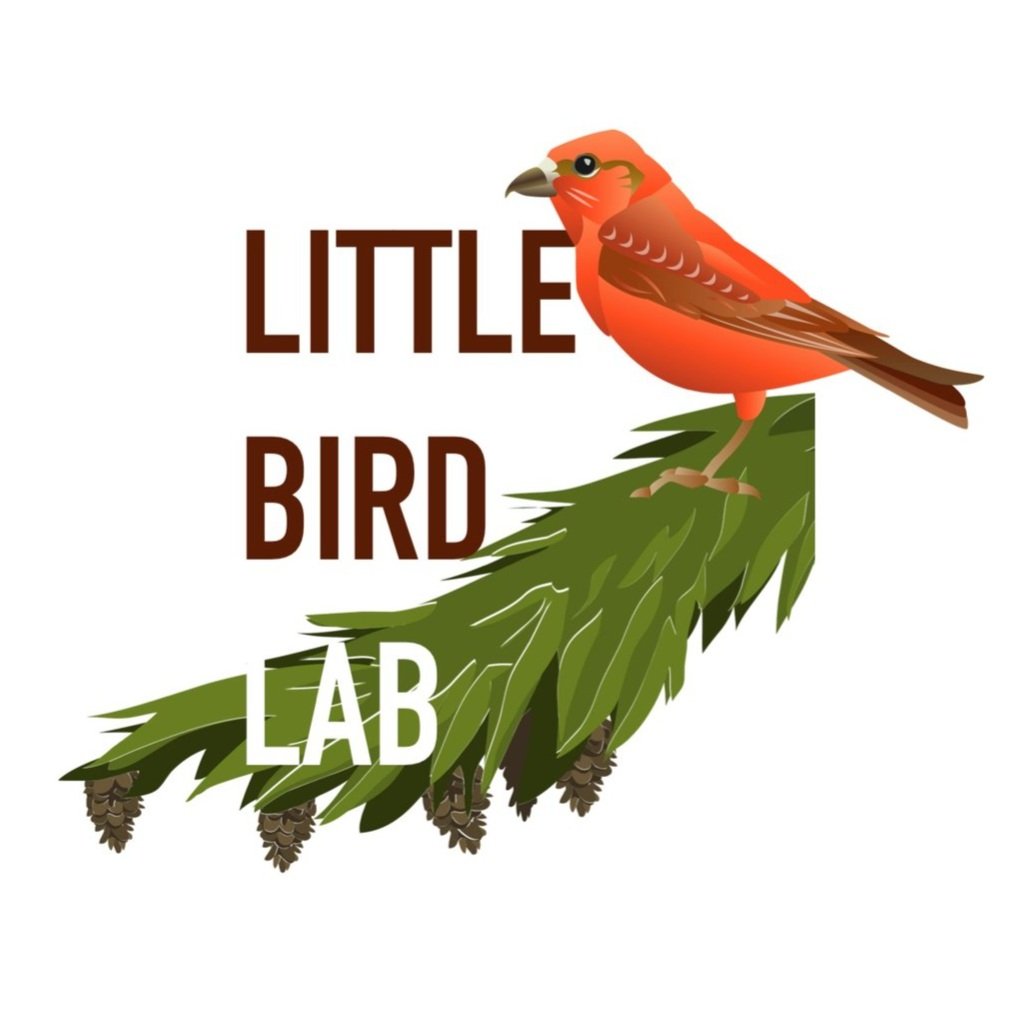
Projects
Our projects contribute to a common goal of understanding how birds cope with unpredictable environmental conditions - including changes in food, predation pressure, extreme weather and environmental toxins.
Dr. Cornelius tracks a crossbill across the frozen Snake River in Grand Teton National Park
Energy costs of breeding during extreme weather
Measuring the energy costs of different life history stages and under different environmental conditions is central to understanding the fitness of birds. We use biotelemetry to record the heart rate of free living birds as they navigate their world and attempt to raise young in variable weather and climate conditions. We hope to learn more about the costs and benefits of decisions made by birds, including when they invest in reproduction and how they weather unpredictable or extreme storms. This research will help us to understand why some individuals or species are more resilient than others and to predict how birds may respond to climate change.
Migration in response to unpredictable resources
Migration is one of earths most amazing spectacles, with billions of individual animals moving variable distances to make use of resource pulses or escape challenging conditions. Many such migrations are seasonal and predictable in timing and in destination - but some migrations are much more flexible responses to unpredictable changes in food. We study facultative migrations in response to fluctuations in food and are particularly interested in how birds prepare for these movements and how social information from conspecifics can help birds to time these movements appropriately. This research is supported by National Science Foundation grant 1755227.
Social information during food uncertainty
Animals become stressed if food is unpredictable and they struggle to meet energy demand. We study how birds respond to unpredictable food availability and how social information may help them to cope better when food becomes limited. We have discovered that early warning from conspecifics that food is declining can help birds to conserve body mass, protect muscle stores and maintain a higher capacity to assimilate nutrients from the food they eat. The use of social information may therefore be an adaptation for coping with environmental variability. Future work will investigate how age, experience or familiarity with neighbors impacts the use of social information and what the mechanisms of protection are in the body.
Consequences of urban toxicants
Birds are increasingly forced to live alongside humans in heavily altered habitats and are sometimes exposed to high levels of toxicants. We are investigating how the Flint Water Crisis impacted urban songbird lead levels by sampling in urban areas of Flint that were irrigated with contaminated water compared to rural areas and those areas of Flint that were not irrigated. Our study includes several species with different diets and attempts to link lead exposure to fitness metrics, including body condition, nestling begging behavior, parental investment and migratory success.
Fear and parental care
Traumatic experiences due to predators, weather or human activity can induce fear in animals and change their behavior and physiology. We study how birds experience fear and how fear impacts reproductive decisions and parental care in urban versus rural habitats. We hope to learn why some individuals and species persist in highly altered urban habitats better than others and what the impacts of human activities have on these species. We also hope to better understand the genetic and physiological mechanisms that underlie fear and anxiety in animals - and how those mechanisms alter behavior and improve or reduce fitness in different environmental contexts.
Birds and Smoke
Climate change is intensifying global wildfire activity, causing more frequent and severe large-scale smoke events. Across the United States, particularly in the American West, communities and ecosystems are increasingly exposed to toxic smoke during the fire season. We know this exposure negatively impacts public health; yet, despite the increasing ubiquity of smoke on U.S. landscapes, we know virtually nothing about the direct effects of wildfire smoke on wildlife. In particular, it is unknown what the extent or severity of health outcomes may be for non-human animals from smoke exposure, or whether organisms have developed adaptive strategies to help them survive extreme smoke events. Birds are almost certainly more vulnerable to wildfire smoke than other taxa, given their heightened sensitivity to air pollution. To protect birds and other animals in an increasingly smoky world, it is imperative that we characterize organismal responses to smoke, including any physiological or behavioral coping mechanisms that exist, and determine how individual responses scale up to population-level impacts. We are working with the Tingley Lab at UCLA and the Clark Lab at UC Riverside to fill this crucial knowledge gap. Our synergistic, interdisciplinary research program will combine (1) lab experiments that expose birds to smoke under controlled conditions, (2) semi-natural captive and natural field experiments that examine birds’ responses to wildfire smoke in situ, and (3) analyses of regional monitoring and citizen science data to connect organismal responses to population- and community-level impacts. We test our hypotheses within a tiered, resist, reduce, remove framework. This approach will allow us to describe how inter- and intraspecific traits inform flexible behavioral and physiological responses to smoke, ultimately impacting health outcomes and driving population-level patterns. Together, the research proposed here will investigate the potential for wildfire smoke to act as a major ecological disturbance, thereby addressing how climate change is remodeling ecosystems through organismal responses to intensified or novel stressors. This research is supported by a National Geographic Society Explorer grant to Jamie Cornelius.






